Kitagawa Utamaro: Master of bijin-ga
In the previous post, we briefly explored the world of ukiyo-e. To further tribute to this art form and delve deeper into its history, I thought we could shortly study the biographies and styles of some of the most celebrated artists of the genre. Today, we will start with Kitagawa Utamaro (1753-1806), one of the most celebrated ukiyo-e artists, known for his exquisite portraits of beautiful women (bijin-ga).
 Portrait of Utagawa Kitagawa by Chōbunsai Eishi (1756-1829). Source: Wikimedia Commonsꜛ (license: public domain)
Portrait of Utagawa Kitagawa by Chōbunsai Eishi (1756-1829). Source: Wikimedia Commonsꜛ (license: public domain)
Biography
Kitagawa Utamaro (喜多川 歌麿) was born in 1753 (exact date uncertain) in Edo (modern-day Tokyo), Japan. Despite his fame, much of Utamaro’s early life remains shrouded in mystery, with details about his family background and training being somewhat unclear. However, it is generally believed that Utamaro was born into a merchant family, which was typical for many ukiyo-e artists of the time.
Early life and training
Growing up in Edo, the largest and most vibrant city in Japan, Utamaro would have been immersed in the bustling urban culture that characterized the late Edo period. Edo was a city of contrasts, where the rigid social hierarchy imposed by the Tokugawa regime coexisted with a thriving, often subversive, popular culture. This culture was centered around the pleasure districts, kabuki theaters, and teahouses, all of which would later feature prominently in Utamaro’s work.
Utamaro likely began his artistic training at a young age, which was common for aspiring ukiyo-e artists. He is believed to have studied under Toriyama Sekien, a well-respected painter and illustrator known for his work in ghost stories and supernatural themes. Under Sekien’s guardianship, Utamaro would have learned the fundamentals of drawing, painting, and woodblock printing—skills that would form the foundation of his later career.
In the 1770s, Utamaro began his career in earnest, producing book illustrations and prints. His early work primarily consisted of illustrations for popular novels and theater playbills, typical of many young artists of the time. These early years were likely a period of apprenticeship and experimentation, where Utamaro honed his craft and developed his distinctive style.
Rise to fame: Master of bijin-ga
It wasn’t until the 1790s that Utamaro rose to prominence, marking a significant turning point in his career. This era was a golden age for ukiyo-e, as advances in color printing techniques had opened new possibilities for artists. Utamaro seized these opportunities to specialize in bijin-ga, or “pictures of beautiful women”, a genre that would become synonymous with his name.

Fukaku Shinobu Koi, by Kitagawa Utamaro, c. 1793–94. Source: Wikimedia Commonsꜛ (license: public domain)
The Edo period’s pleasure quarters, particularly the Yoshiwara district in Edo, were the epicenters of this popular culture. These districts were not just places of entertainment but also centers of fashion, art, and literature. Courtesans and geisha, who were the celebrities of their day, became the muses for many ukiyo-e artists, including Utamaro. His work provided a window into this world, capturing the elegance, beauty, and allure of the women who lived and worked there.
Utamaro’s bijin-ga were revolutionary for their time. Unlike previous artists who often depicted women in a generalized, idealized manner, Utamaro’s portraits were more intimate and individualized. He had a remarkable ability to capture the subtleties of expression and emotion, which brought a new psychological depth to his subjects. His large-headed portraits (okubi-e) focused on the faces of his subjects, allowing viewers to connect with the humanity of the women portrayed.

 Left: The Courtesan Ichikawa of the Matsuba Establishment from the series Famous Beauties of Edo, 1796. Source: Wikimedia Commonsꜛ (license: public domain) – Right: Woman drinking wine, 1802. Source: Wikimedia Commonsꜛ (license: public domain)
Left: The Courtesan Ichikawa of the Matsuba Establishment from the series Famous Beauties of Edo, 1796. Source: Wikimedia Commonsꜛ (license: public domain) – Right: Woman drinking wine, 1802. Source: Wikimedia Commonsꜛ (license: public domain)
Life as an ukiyo-e artist in the Edo period
Life as an ukiyo-e artist in the Edo period was both challenging and rewarding. Artists like Utamaro worked within a complex and hierarchical system where they were often dependent on the patronage of publishers and the demands of the market. Ukiyo-e artists did not usually work independently; rather, they collaborated closely with skilled carvers and printers to produce their works.
Edo, as a city, was a hive of activity with a population exceeding one million by the mid-18th century. This urban environment provided both inspiration and an audience for Utamaro’s work. The city was home to a vibrant middle class, including merchants and artisans, who were the primary consumers of ukiyo-e prints. These prints were relatively affordable, allowing ordinary people to own and appreciate art, which was a significant departure from the past when art was largely the preserve of the aristocracy and religious institutions.
Despite the popularity of ukiyo-e, the life of an artist was precarious. The ukiyo-e market was competitive, and artists had to constantly innovate to maintain their relevance and appeal. Utamaro’s success can be attributed to his ability to tap into the zeitgeist of his time, capturing the beauty and complexities of Edo’s urban life in a way that resonated deeply with his audience.
Imprisonment and decline
Utamaro’s later years were marked by a significant setback that would ultimately affect his health and productivity. In 1804, he ran afoul of the strict censorship laws of the Tokugawa shogunate. Utamaro had produced a series of prints depicting the military leader Toyotomi Hideyoshi and his concubines. Although the prints were visually stunning, the subject matter was deemed disrespectful to the ruling shogunate. As a result, Utamaro was arrested and subjected to public humiliation. He was reportedly manacled for 50 days, a punishment that was not only physically painful but also psychologically damaging.
This incident marked a turning point in Utamaro’s life. Following his release, his artistic output declined significantly, both in quantity and quality. The trauma of his imprisonment likely contributed to a deterioration in his health, and by 1806, he had passed away. Utamaro’s death marked the end of an era in ukiyo-e, but his legacy lived on through his works, which continued to influence artists in Japan and around the world.
Style
Utamaro’s fame rests primarily on his bijin-ga—portraits of beautiful women, particularly courtesans and geisha. Unlike his predecessors, who often depicted women in a stylized or generalized manner, Utamaro introduced a new level of individuality and psychological depth to his subjects. His works captured the subtleties of female beauty, emotions, and personalities, making his prints stand out in the ukiyo-e genre.
In particular, Utamaro is known for his large-headed portraits (okubi-e), which focus on the face and upper body. This allowed him to explore a range of expressions and subtle emotions, bringing his subjects to life in a way that had not been seen before in ukiyo-e. He employed delicate lines and soft colors to enhance the elegance and allure of his subjects. He used a limited palette, often emphasizing shades of pink, red, and green, which contributed to the refined and graceful appearance of his prints.

Yama-uba with blackened teeth and Kintarō, from Yamanba and Kintaro Sakazuki series, by Kitagawa Utamaro, 18th c. Source: Wikimedia Commonsꜛ (license: public domain)
While Utamaro is best known for his portraits of courtesans, he also depicted ordinary women, such as housewives and working women, in their daily activities. This broader focus helped to humanize his subjects and broaden the appeal of his work.
Significance and legacy
Kitagawa Utamaro’s impact on the world of ukiyo-e and Japanese art cannot be overstated. He was a pioneer in the depiction of women, bringing a level of sophistication and empathy to his portraits that had not been seen before. His ability to capture the transient beauty and subtle emotions of his subjects made his work timeless and continues to resonate with audiences today.
In the decades following his death, Utamaro’s work reached Europe, where it significantly influenced the Japonisme movement. His prints were admired by Western artists for their elegance, composition, and innovative use of color. The reverence for his work is evident in the way his influence permeated the works of Western artists such as Edgar Degas and Mary Cassatt, who drew inspiration from Utamaro’s depictions of women and his exploration of everyday life.


Left: Takashima Ohisa using two mirrors to observe her coiffure, by Kitagawa Utamaro, circa 1795. Source: Wikimedia Commonsꜛ (license: public domain) – Right: The Coiffure, drypoint and aquatint, by Mary Cassatt, a French Impressionist, c. 1890–91. Source: Wikimedia Commonsꜛ (license: public domain).
Notable works
Kitagawa Utamaro produced a vast number of prints during his career. Some of his most celebrated works include:
- Poems of the pillow (Utamakura), c. 1788 – A series of 12 shunga prints illustrating scenes from the erotic poetry anthology of the same name.
- Ten Studies in Female Physiognomy (Fujin Sōgaku Jittai), c. 1792-1793 – A series of prints exploring different expressions and emotions in women’s faces, highlighting Utamaro’s focus on individuality and psychological depth.
- Ten Types in the Physiognomic Study of Women (Fujo Ninso Juppin), c. 1792-1793 – Another influential series, this set further explores the nuances of female beauty, focusing on subtle differences in facial features and expressions.
- Famous Beauties of Edo, 1792–1793 – A series that showcases the beauty and allure of women.
- Anthology of Poems: The Love Section (Kasen koi no bu), c. 1793 – A series of five prints illustrating scenes from classical Japanese poetry. The series title parodies the section headings in waka and kyōka poetry anthologies.
- Women Engaged in the Sericulture Industry (Gokei) – This series depicts women working in the silk industry, showcasing Utamaro’s ability to capture everyday life and the working environment.
- A Collection of the Great Beauties of the Present Day (Tōji zensei bijin zoroi), 1794 – A series that portrays famous courtesans of the Yoshiwara pleasure district, highlighting their fashion and allure.
- Twelve Hours in the Pleasure Quarters (Seirō Jūni Toki), c. 1794 – A famous series that depicts the daily lives of courtesans over the course of twelve hours, each print representing a specific hour.
- Five Shades of Ink in the Northern Quarter (Hokkoku Goshiki-zumi), c. 1794-1795 – A series of five prints that depicts and contrasts women who work in or near the pleasure district of Yoshiwara.
- Snow, Moon, and Flowers (Setsugekka), c. 1790s – A series that pairs beautiful women with seasonal motifs, emphasizing the transient beauty of both nature and human life.
- Flourishing Beauties of the Present Day, 1795–1797 – I couldn’t find detailed information about this series.
- An Array of Passionate Lovers (Jitsu kurabe iro no minakami), c. 1800 – A series of prints that depict couples in various stages of romantic and intimate relationships.
- Ten Studies in Female Physiognomy (Fujin Sōgaku Jittai), c. 1801-1804 – This series is made of different prints from the earlier one, and is known to have had all ten prints in the set published.
Examples

 Left: Ase o fuku onna (Woman Wiping Sweat), by Kitagawa Utamaro, 1798. Source: Wikimedia Commonsꜛ (license: public domain). – Right: Popen o Fuku Musume (Young lady blowing on a poppin glass), from the series Fujin Sōgaku Jittai and Fujo Ninsō Juppin, 1790. Source: Wikimedia Commonsꜛ (license: public domain)
Left: Ase o fuku onna (Woman Wiping Sweat), by Kitagawa Utamaro, 1798. Source: Wikimedia Commonsꜛ (license: public domain). – Right: Popen o Fuku Musume (Young lady blowing on a poppin glass), from the series Fujin Sōgaku Jittai and Fujo Ninsō Juppin, 1790. Source: Wikimedia Commonsꜛ (license: public domain)

 Left: Mother and Child. Source: Wikimedia Commonsꜛ (license: public domain) – Right: Tsuitate no Danjo, c. 1797. Source: Wikimedia Commonsꜛ (license: public domain)
Left: Mother and Child. Source: Wikimedia Commonsꜛ (license: public domain) – Right: Tsuitate no Danjo, c. 1797. Source: Wikimedia Commonsꜛ (license: public domain)

 Left: Hairdresser from the series Twelve types of women’s handicraft. Source: Wikimedia Commonsꜛ (license: public domain) – Right: Sugatami Shichinin Keshō. Source: Wikimedia Commonsꜛ (license: public domain)
Left: Hairdresser from the series Twelve types of women’s handicraft. Source: Wikimedia Commonsꜛ (license: public domain) – Right: Sugatami Shichinin Keshō. Source: Wikimedia Commonsꜛ (license: public domain)

 Left: Three Beauties of the Present Day, c. 1793. Source: Wikimedia Commonsꜛ (license: public domain) – Right: Women playing with the mirror, 1797. Source: Wikimedia Commonsꜛ (license: public domain)
Left: Three Beauties of the Present Day, c. 1793. Source: Wikimedia Commonsꜛ (license: public domain) – Right: Women playing with the mirror, 1797. Source: Wikimedia Commonsꜛ (license: public domain)
 Hideyoshi and his Five Wives Viewing the Cherry-blossoms at Higashiyama, 1802-1804. Source: Wikimedia Commonsꜛ (license: public domain)
Hideyoshi and his Five Wives Viewing the Cherry-blossoms at Higashiyama, 1802-1804. Source: Wikimedia Commonsꜛ (license: public domain)

 Left: Katō Kiyomasa at a party with Korean dancers, 1802-1804. Source: Wikimedia Commonsꜛ (license: public domain) – Right: Flowers of Edo: Young Woman’s Narrative Chanting to the Shamisen, by Kitagawa Utamaro, c. 1803. Source: Wikimedia Commonsꜛ (license: public domain)
Left: Katō Kiyomasa at a party with Korean dancers, 1802-1804. Source: Wikimedia Commonsꜛ (license: public domain) – Right: Flowers of Edo: Young Woman’s Narrative Chanting to the Shamisen, by Kitagawa Utamaro, c. 1803. Source: Wikimedia Commonsꜛ (license: public domain)
 Travels Looking at Mt. Fuji, 1806. Source: Wikimedia Commonsꜛ (license: public domain)
Travels Looking at Mt. Fuji, 1806. Source: Wikimedia Commonsꜛ (license: public domain)

 Left: Kushi, 1780-1789. Source: Wikimedia Commonsꜛ (license: public domain) – Right: Mother Holding Child as He Plays with a Toy Fish in a Tub of Wate, 1803. Source: Wikimedia Commonsꜛ (license: public domain)
Left: Kushi, 1780-1789. Source: Wikimedia Commonsꜛ (license: public domain) – Right: Mother Holding Child as He Plays with a Toy Fish in a Tub of Wate, 1803. Source: Wikimedia Commonsꜛ (license: public domain)

 Left: Emotional Turmoil of Wankyū and Matsuyama, from the series Eight Pledges at Lovers, 1799. Source: Wikimedia Commonsꜛ (license: public domain) – Right: Kamisuki (Combing the hair), from the series * Fujin Sōgaku Jittai*, c. 1801–1804. Source: Wikimedia Commonsꜛ (license: public domain)
Left: Emotional Turmoil of Wankyū and Matsuyama, from the series Eight Pledges at Lovers, 1799. Source: Wikimedia Commonsꜛ (license: public domain) – Right: Kamisuki (Combing the hair), from the series * Fujin Sōgaku Jittai*, c. 1801–1804. Source: Wikimedia Commonsꜛ (license: public domain)
 Lovers in an upstairs room, from Uta makura (Poem of the Pillow), 1788. Source: Wikimedia Commonsꜛ (license: public domain)
Lovers in an upstairs room, from Uta makura (Poem of the Pillow), 1788. Source: Wikimedia Commonsꜛ (license: public domain)

 Left: Uchiwa o Sakasa ni Motsu Onna (Woman holding a hand-fan upside-down), from the series Fujin Sōgaku Jittai, 1793. Source: Wikimedia Commonsꜛ (license: public domain) – Right: Omoshiroki Sō (The Interesting Type), from the series Fujin Sōgaku Jittai, from the series Fujin Sōgaku Jittai, 1793. Source: Wikimedia Commonsꜛ (license: public domain)
Left: Uchiwa o Sakasa ni Motsu Onna (Woman holding a hand-fan upside-down), from the series Fujin Sōgaku Jittai, 1793. Source: Wikimedia Commonsꜛ (license: public domain) – Right: Omoshiroki Sō (The Interesting Type), from the series Fujin Sōgaku Jittai, from the series Fujin Sōgaku Jittai, 1793. Source: Wikimedia Commonsꜛ (license: public domain)

 Left: Tabako no Kemuri o Fuku Onna (Beauty smoking a pipe after bathing), from the series Fujin Sōgaku Jittai, 1792-1793. Source: Wikimedia Commonsꜛ (license: public domain) – Right: Sensu o Mochi Higasa o Sasu Onna (Woman holding a hand-fan and parasol), from the series Fujin Sōgaku Jittai, ca. 1792-1793. Source: Wikimedia Commonsꜛ (license: public domain)
Left: Tabako no Kemuri o Fuku Onna (Beauty smoking a pipe after bathing), from the series Fujin Sōgaku Jittai, 1792-1793. Source: Wikimedia Commonsꜛ (license: public domain) – Right: Sensu o Mochi Higasa o Sasu Onna (Woman holding a hand-fan and parasol), from the series Fujin Sōgaku Jittai, ca. 1792-1793. Source: Wikimedia Commonsꜛ (license: public domain)

 Left: Fumi Yomu Onna (Woman reading a letter), from the series Fujin Sōgaku Jittai, ca. 1792-1793. Source: Wikimedia Commonsꜛ (license: public domain) – Right: Chōchin wo Motsu Onna (Woman holding a paper lamp), from the series Fujin Sōgaku Jittai, ca. 1792-1793. Source: Wikimedia Commonsꜛ (license: public domain)
Left: Fumi Yomu Onna (Woman reading a letter), from the series Fujin Sōgaku Jittai, ca. 1792-1793. Source: Wikimedia Commonsꜛ (license: public domain) – Right: Chōchin wo Motsu Onna (Woman holding a paper lamp), from the series Fujin Sōgaku Jittai, ca. 1792-1793. Source: Wikimedia Commonsꜛ (license: public domain)

 Left: U no koku (hour of the rabbit; c. 6 am), from the series Seirō Jūni Toki, ca. 1794. Source: Wikimedia Commonsꜛ (license: public domain) – Right: Tatsu no koku (hour of the dragon; c. 8 am), from the series Seirō Jūni Toki, ca. 1794. Source: Wikimedia Commonsꜛ (license: public domain)
Left: U no koku (hour of the rabbit; c. 6 am), from the series Seirō Jūni Toki, ca. 1794. Source: Wikimedia Commonsꜛ (license: public domain) – Right: Tatsu no koku (hour of the dragon; c. 8 am), from the series Seirō Jūni Toki, ca. 1794. Source: Wikimedia Commonsꜛ (license: public domain)

 Left: Mi no koku (hour of the snake; c. 10 am), from the series Seirō Jūni Toki, ca. 1794. Source: Wikimedia Commonsꜛ (license: public domain) – Right: Uma no koku (hour of the horse; c. 12 pm), from the series Seirō Jūni Toki, ca. 1794. Source: Wikimedia Commonsꜛ (license: public domain)
Left: Mi no koku (hour of the snake; c. 10 am), from the series Seirō Jūni Toki, ca. 1794. Source: Wikimedia Commonsꜛ (license: public domain) – Right: Uma no koku (hour of the horse; c. 12 pm), from the series Seirō Jūni Toki, ca. 1794. Source: Wikimedia Commonsꜛ (license: public domain)

 Left: Hitsuji no koku (hour of the goat; c. 2 pm), from the series Seirō Jūni Toki, ca. 1794. Source: Wikimedia Commonsꜛ (license: public domain) – Right: Saru no koku (hour of the monkey; c. 4 pm), from the series Seirō Jūni Toki, ca. 1794. Source: Wikimedia Commonsꜛ (license: public domain)
Left: Hitsuji no koku (hour of the goat; c. 2 pm), from the series Seirō Jūni Toki, ca. 1794. Source: Wikimedia Commonsꜛ (license: public domain) – Right: Saru no koku (hour of the monkey; c. 4 pm), from the series Seirō Jūni Toki, ca. 1794. Source: Wikimedia Commonsꜛ (license: public domain)

 Left: Tori no koku (hour of the rooster; c. 6 pm), from the series Seirō Jūni Toki, ca. 1794. Source: Wikimedia Commonsꜛ (license: public domain) – Right: Inu no koku (hour of the dog; c. 8 pm), from the series Seirō Jūni Toki, ca. 1794. Source: Wikimedia Commonsꜛ (license: public domain)
Left: Tori no koku (hour of the rooster; c. 6 pm), from the series Seirō Jūni Toki, ca. 1794. Source: Wikimedia Commonsꜛ (license: public domain) – Right: Inu no koku (hour of the dog; c. 8 pm), from the series Seirō Jūni Toki, ca. 1794. Source: Wikimedia Commonsꜛ (license: public domain)

 Left: I no koku (hour of the pig; c. 10 pm), from the series Seirō Jūni Toki, ca. 1794. Source: Wikimedia Commonsꜛ (license: public domain) – Right: Ne no koku (hour of the rat; ca 12 am), from the series Seirō Jūni Toki, ca. 1794. Source: Wikimedia Commonsꜛ (license: public domain)
Left: I no koku (hour of the pig; c. 10 pm), from the series Seirō Jūni Toki, ca. 1794. Source: Wikimedia Commonsꜛ (license: public domain) – Right: Ne no koku (hour of the rat; ca 12 am), from the series Seirō Jūni Toki, ca. 1794. Source: Wikimedia Commonsꜛ (license: public domain)

 Left: Ushi no koku (hour of the ox; ca. 2 am), from the series Seirō Jūni Toki, ca. 1794. Source: Wikimedia Commonsꜛ (license: public domain) – Right: Tora no koku (hour of the tiger; c. 4 am), from the series Seirō Jūni Toki, ca. 1794. Source: Wikimedia Commonsꜛ (license: public domain)
Left: Ushi no koku (hour of the ox; ca. 2 am), from the series Seirō Jūni Toki, ca. 1794. Source: Wikimedia Commonsꜛ (license: public domain) – Right: Tora no koku (hour of the tiger; c. 4 am), from the series Seirō Jūni Toki, ca. 1794. Source: Wikimedia Commonsꜛ (license: public domain)
Conclusion
Kitagawa Utamaro remains one of the most celebrated artists of the ukiyo-e tradition, particularly for his innovative approach to depicting women (bijin-ga). His ability to blend delicate beauty with deep emotion set a new standard in Japanese art and influenced artists both in Japan and abroad. Utamaro’s legacy endures not only in the enduring popularity of his works but also in the profound impact he had on the development of portraiture within the ukiyo-e genre. In my opinion, his prints continue to captivate audiences with their timeless elegance and emotional depth, making him a true master of his craft.
References and further reading
- Kitagawa Utamaro on ukiyo-e.orgꜛ
- Wikipedia article on Kitagawa Utamaroꜛ
- Woldemar von Seidlitz, Dora Amsden, Ukiyo-e, 2016, Parkstone International, ISBN: 9781785257391
- Amy Reigle Newland, The Hotei encyclopedia of Japanese woodblock prints, 2005, Hotei Publishing, ISBN: 9789074822657
- Rebecca Salter, Japanese Woodblock Printing, 2002, University of Hawaii Press, ISBN: 9780824825539
- Richard Lane, Masters of the Japanese print, their world and their work, 2021, Hassell Street Press, ISBN: 9781015300231
- Andreas Marks, Japanese Woodblock Prints - Artists, Publishers And Masterworks: 1680 - 1900, 2010, Tuttle Publishing, ISBN: 9784805310557
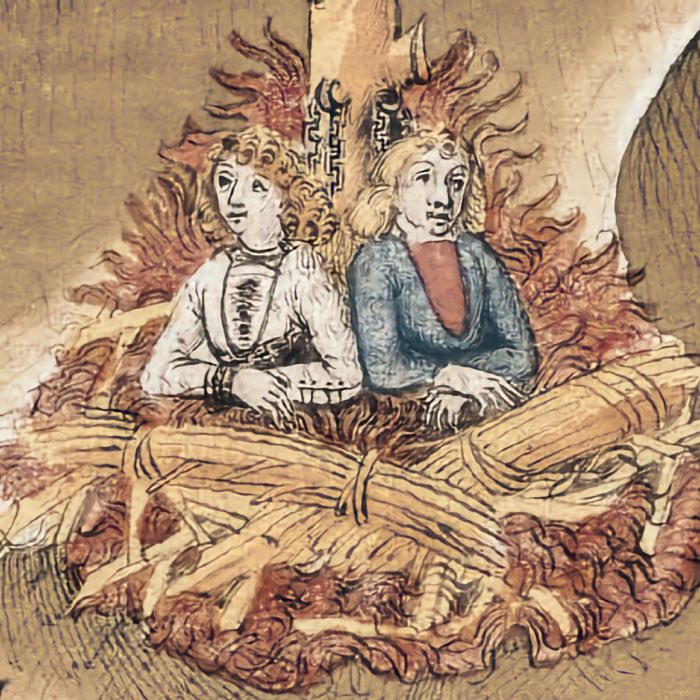
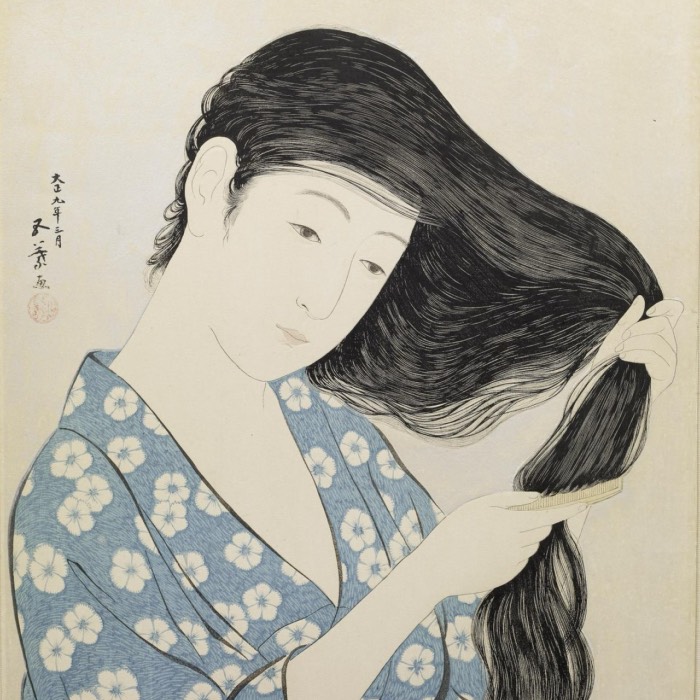

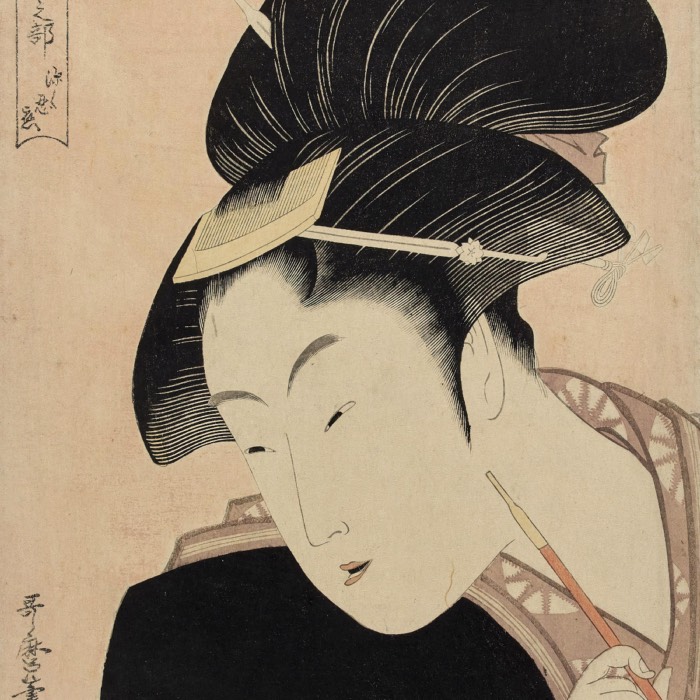
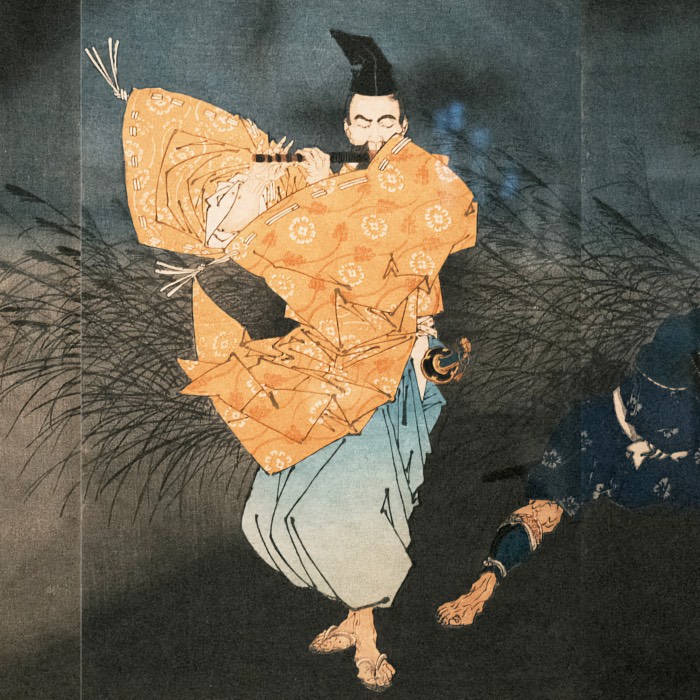
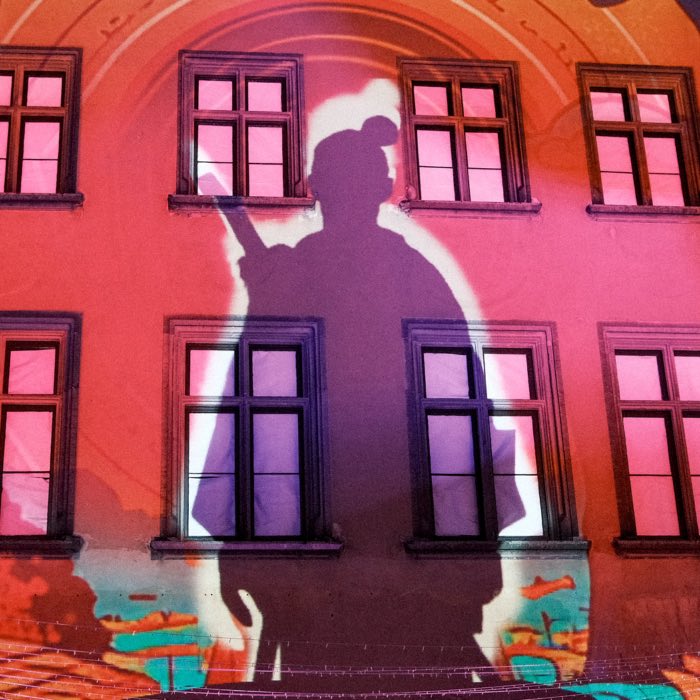
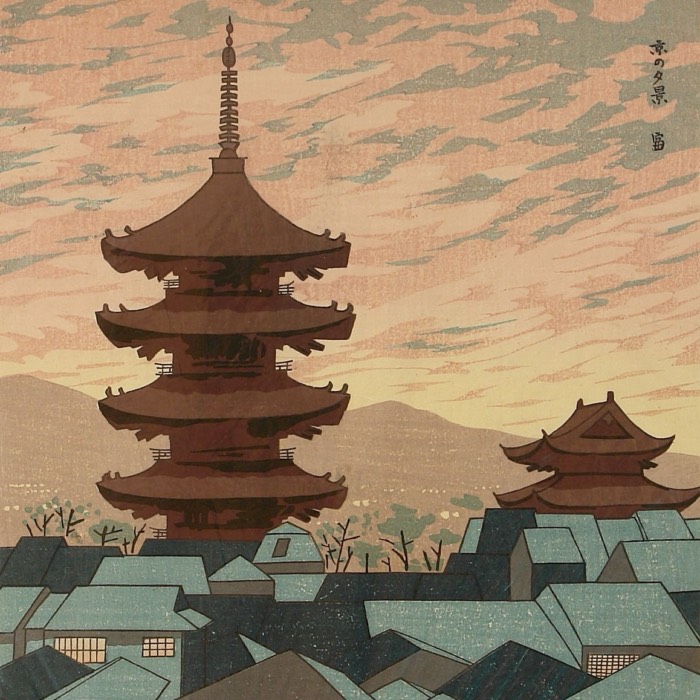
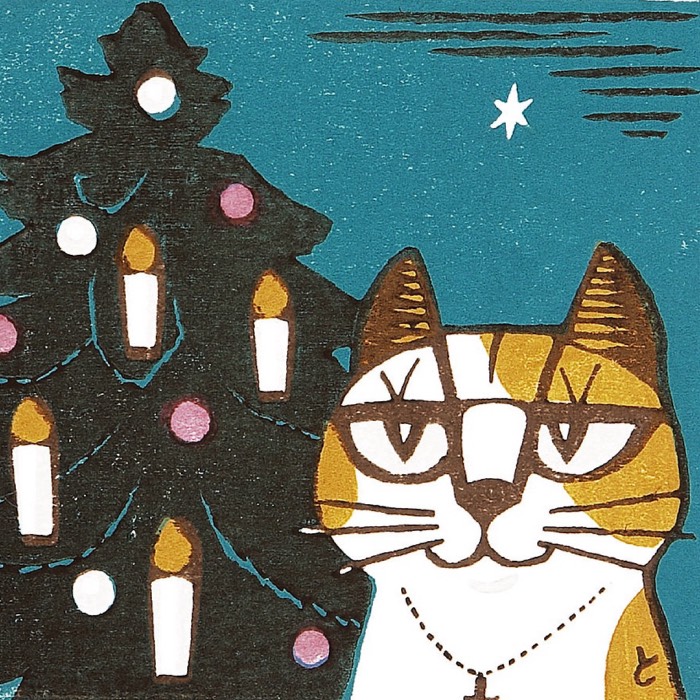
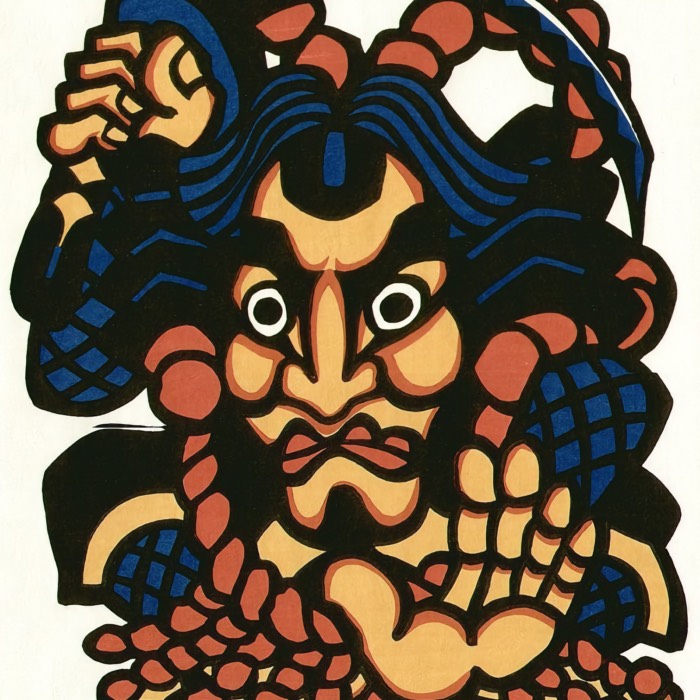
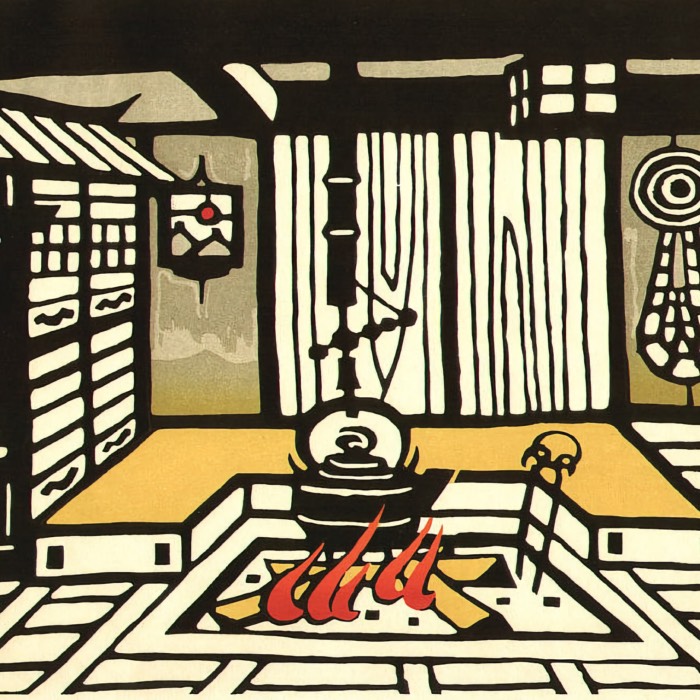
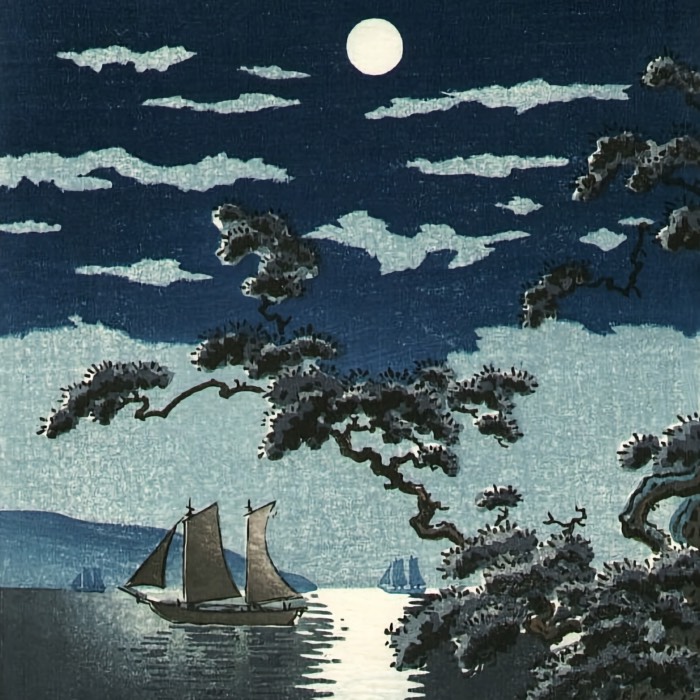
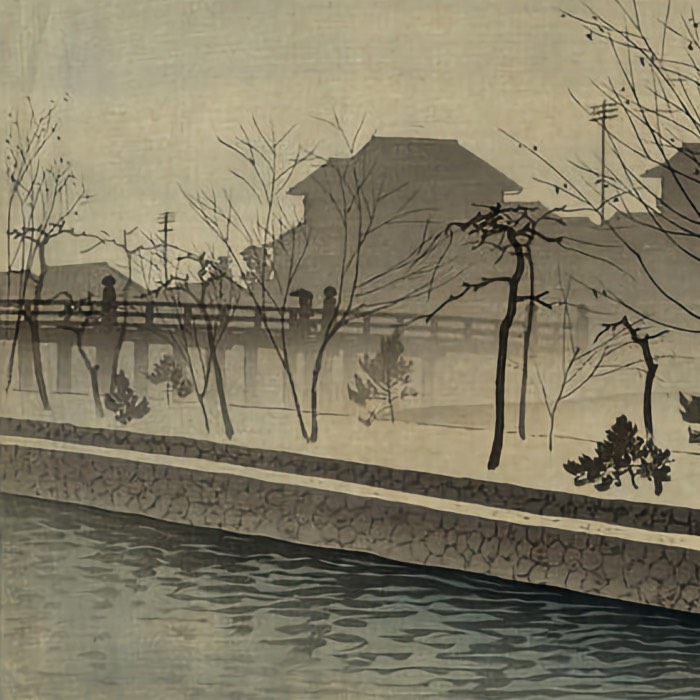
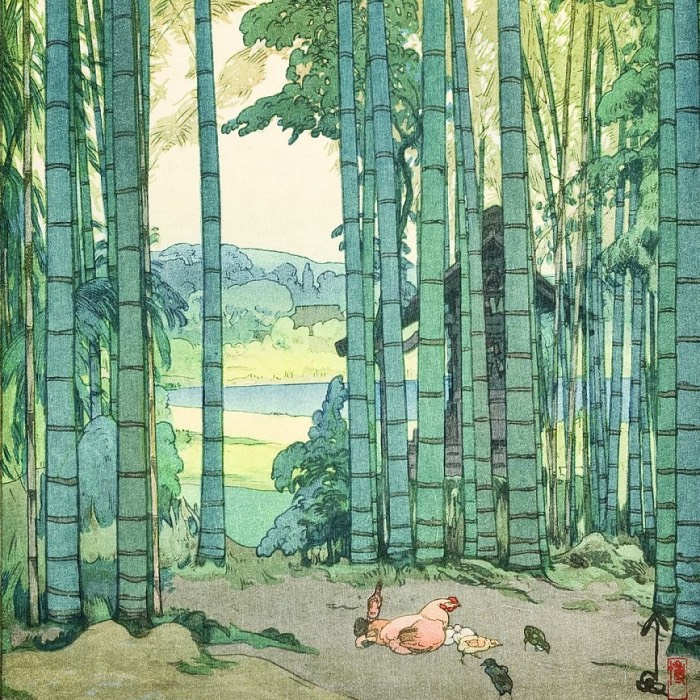
comments